
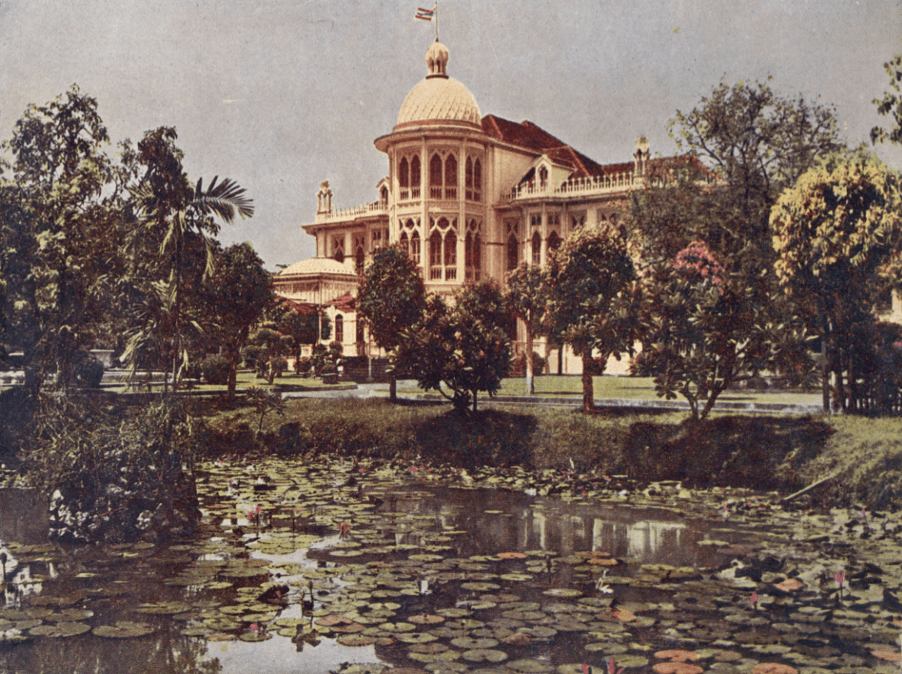
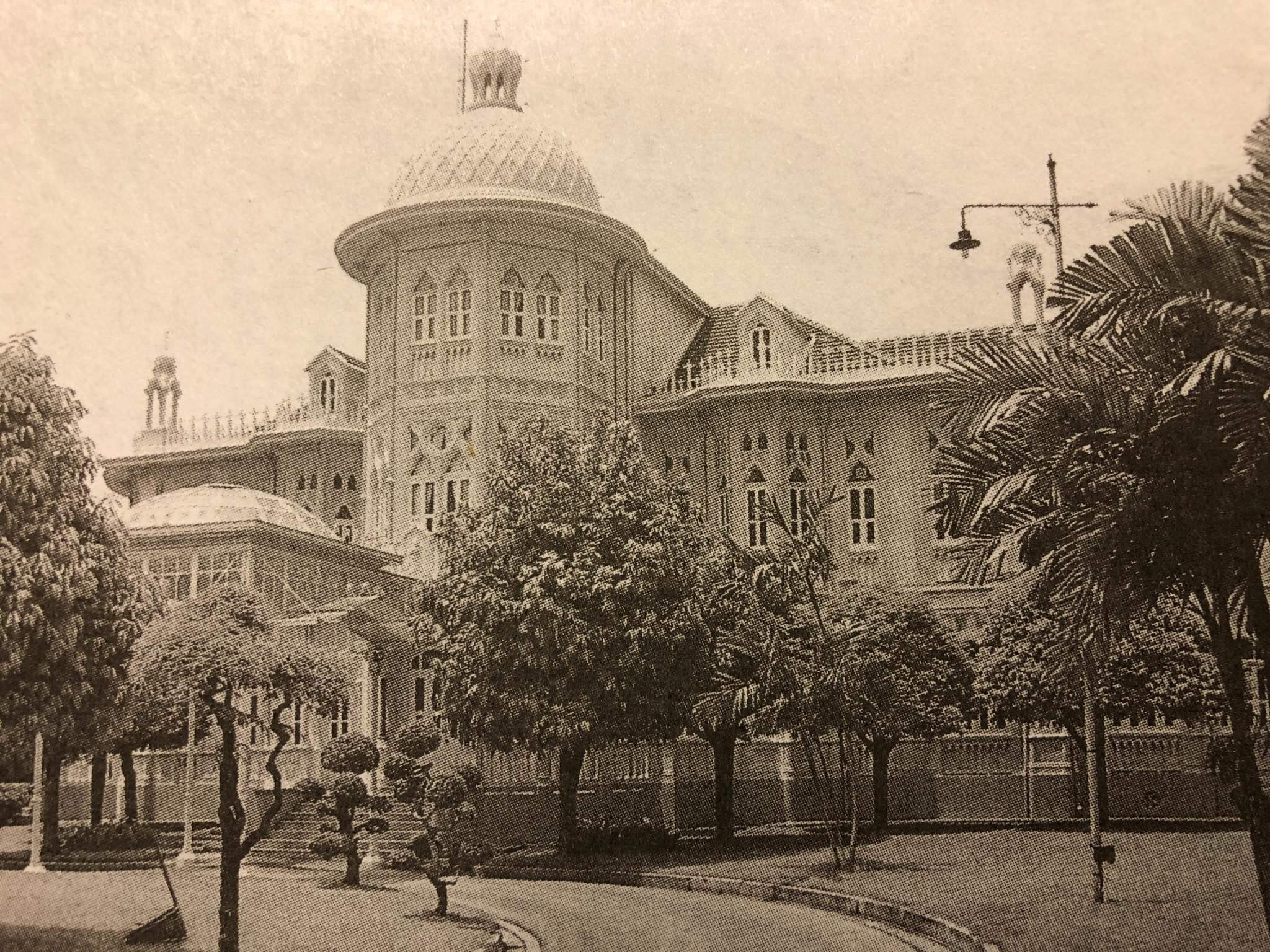
From the Residence of the Courtier to the Official Residence of the Prime Minister.
This Venetian Gothic Revival mansion was a work of Italian architects Mario Tamango and Annibale Rigotti. His Majesty King Vajiravudh had ordered the construction of Banthomsinth House, as it was formerly known, in 1922 for one of his courtiers, Major General Phraya Aniruth-deva (Momluang Phuen Phuengbun).
During his time in office, Field Marshal P. Phibunsongkram had The Crown Property Bureau purchase the mansion from Phraya Aniruth-deva who fled to Nonthaburi with his family due to the Second World War. The courtier agreed to sell some parts of the land along with the main mansion, which the government used as a state guest house and the office of Liaison between Thailand and Occupying Japanese Force. During the period, it was called the “Thai-Alliance Building”.
After the end of the Second World War, Phraya Aniruth-deva decided to sell the rest to a foreign doctor. The plot of land is now the Mission Hospital. Banthomsinth House has since been renamed Phitsanulok Mansion to reflect the road it is situated on. Interestingly, the mansion had been left abandoned until General Prem Tinsulanonda took office and renovated it to be an official residence.

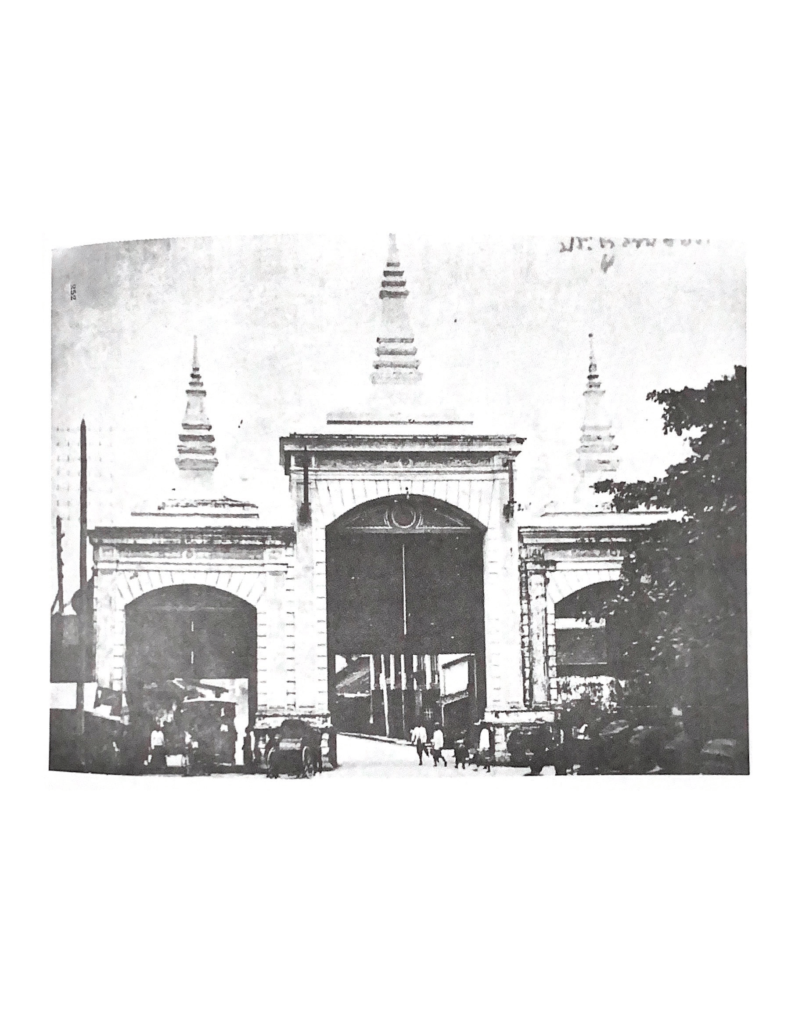
When the names no longer correspond to the present
Sam Yot (Three Peaks) was arguably one of the most active and vibrant hubs in Phra Nakhon. This neighbourhood took its name after the old city gate at Damrong Sathit bridge (Sapan Lhek or steel bridge). Sam Yot refers to the three passageways and three peaks of that gate. As Charoen Krung Road expanded, the original Sam Yot gate had to be demolished, leaving behind only the name.
Pratu Phi (Ghost Gate) refers to the city gate used to transport dead bodies out of the city for cremation during the early Rattanakosin period. The gate was at the front of Wat Thepthidaram and on the same road as Wat Phra Si Rattana Satsadaram to ward off evil spirits. The route through the gate led to the graveyard of Wat Saket. Afterwards, the graveyard and the defensive wall were dismantled.
Stalls, gambling dens, and people bustling through the streets filled the neighbourhood in the past. As time went by, new establishments and meeting places came into existence, leading to Som Yot’s declining popularity over time. Still, at present, the name Som Yot is re-entering Thai people’s minds once more as an MRT station. Pratu Phi, likewise, has become a hub known for its delicious food, revitalizing the once quiet neighbourhood yet again.

What kind of activity have you done at Sanam Luang?
Sanam Luang is a collective memory where many people recognize its multi functions serving its name ‘the royal field’ and a venue for a flea market, a workplace, a park, and a big bedroom. Today, Sanam Luang is different from what it has been, but it is never-be-forgotten how it has served as the public space for all.

Where two factions face.
Initially, a part of the Dusit Palace, the King Rama V Equestrian Statue Plaza or the Royal Plaza is formally known as the Dusit Palace Plaza. Nevertheless, the common term for Thai people is “the Equestrian Statue Plaza” as its nickname after the erection of His Majesty King Chulalongkorn’s Equestrian statue in front of Ananta Samakhom Throne Hall at the centre of the plaza. In contrast to the magnificent throne hall in the background and the dignified statue, embedded in the pavement is a memorial plaque marking another significant event in Thai history. The brass plaque was planted in 1936 to commemorate the Siamese Revolution of 1932, particularly, as a symbol of the critical moment when General Phraya Phahonponpayuhasena, the leader of the People’s Party, read its first announcement to the public at the dawn of 24 June 1932 on the very spot.

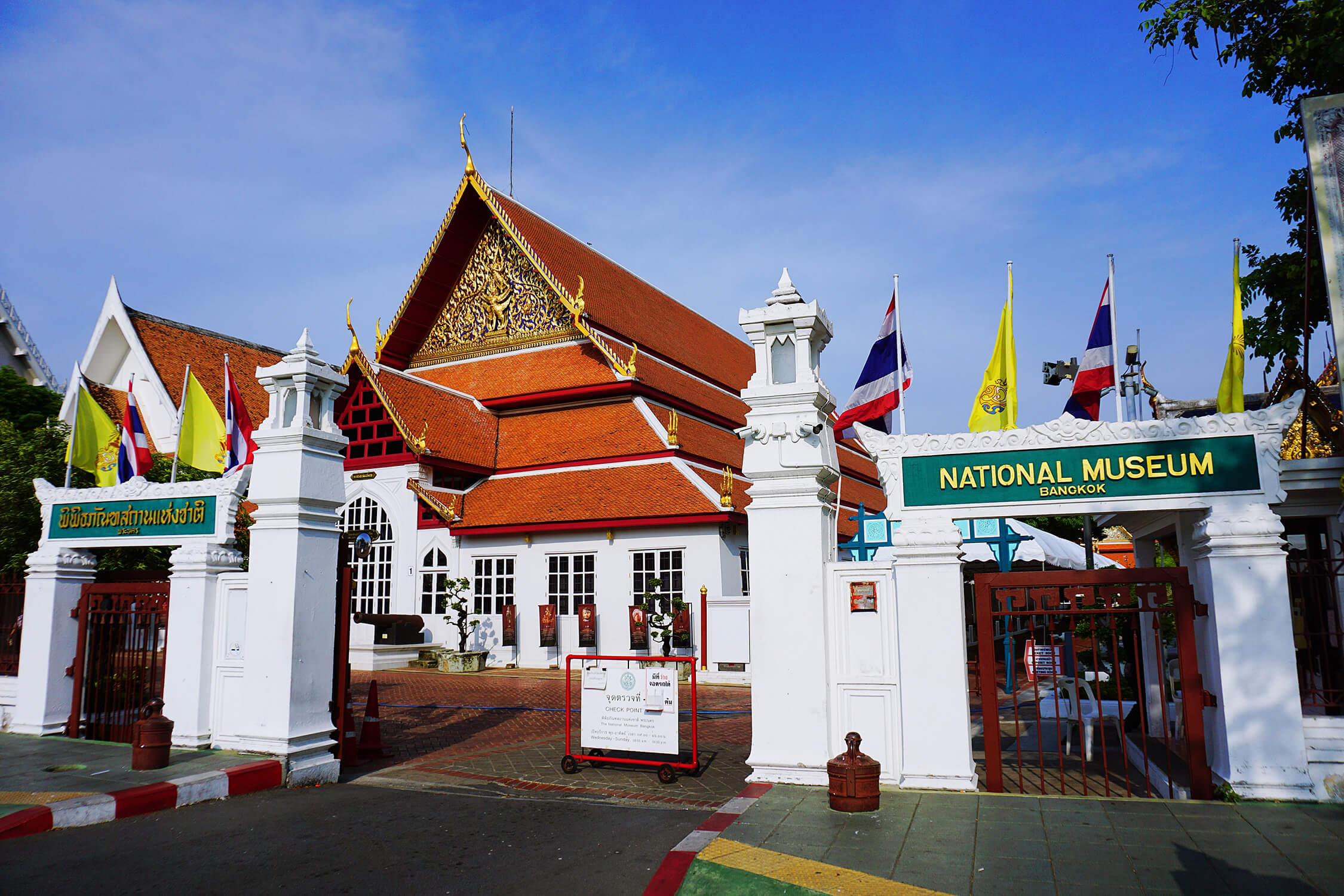
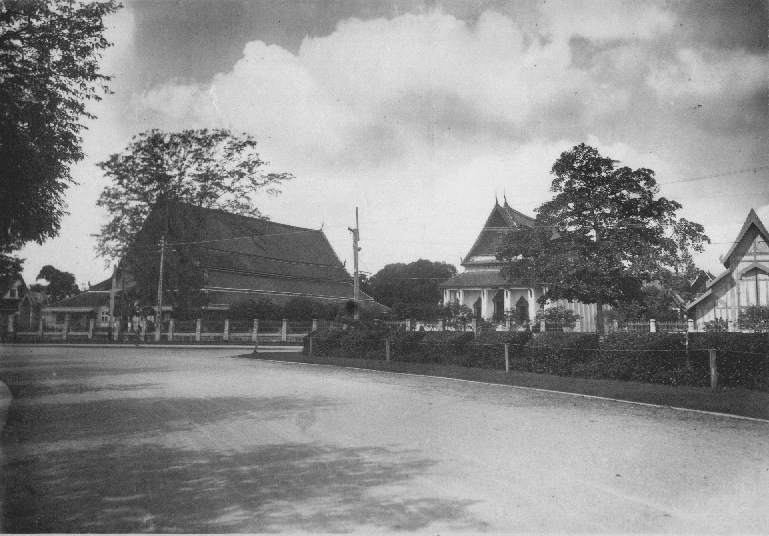
From the first museum of Siam to the Bangkok National Museum.
King Chulalongkorn first ordered a move of the Concordia Hall Museum, the museum at Sahathai Samakhom Hall, to the three throne halls within the Front Palace. Later, King Prajadhipok had graciously dedicated the whole premise to house the Bangkok National Museum. Intending that the museum should be opened to the general public, he personally inaugurated it on 10 November 1926.
“… Now that the Royal Society has set up the Vajirayana Library and the new museum, I believe you all share my delight in seeing such a grandiose museum so befitting of our capital. It is my hope that this new museum shall be satisfactory to you and the people who visit on the next day…”
The Royal Speech of King Prajadhipok
given at the inauguration of The National Museum Bangkok on 10 November 1926.


Where the city of angels begins
The Grand Palace is the first royal compound on Rattanakosin Island. It was built in 1782 during the reign of King Buddha Yodfa Chulaloke, the first king of the Chakri dynasty. Continuing on the tradition of the Grand Palace in Ayutthaya kingdom, the Grand Palace is divided into parts as follows:
The Outer Court is the site of administrative offices and Wat Phra Sri Rattana Satsadaram (The Temple of Emerald Buddha), a royal temple in the precinct of the Royal Palace, similarly to Wat Phra Si Sanphet on the old Grand Palace in Ayutthaya.
The Middle Court is the location of Phra Maha Prasat Group (Throne Halls), Phra Racha Monthien (Royal Residential Halls), the reception hall throughout the reign of King Rama I to King Rama V. Afterwards, it remains a place to conduct royal ceremonies and to receive visiting dignitaries.
The Inner Court is reserved exclusively for the King, his queens and consorts, ladies-in-waiting, and servants. It, later, is used as an art and culture learning centre especially high crafts of all kinds.
Throughout the years, the 239-year-old palace receives routine maintenance via the use of contemporary materials, techniques and architectural styles.


The Government House Premise and Thai Khu Fah Building
The government house is a crucial government compound. It serves as the official workplace of the prime minister, deputy prime minister, state officials of the prime minister’s office, and other related departments. On some occasions, the premise is used for receiving distinguished guests or hosting social functions such as the celebration of His Majesty the King’s birthday. The house was formerly “Villa Norasingh” and belonged to General Chao Phraya Ram Rakop (Mom Luang Fua Phuengbun), one of King Vajiravudh’s closest courtiers. In 1941, it became the government house because of Field Marshal Plaek Phibunsongkhram (Field Marshal P. Phibunsongkhram), the then prime minister. The premise comprises, for instance, Thai-Khu-Fah Building, Santimaitree Building, and Nareesamosorn Building.


The royal residence of Prince Damrong Rajanubhab, one of the revered figures in the field of Thai history.
Situated on Lan Luang Road, Varadis Palace was previously the residence of Prince Damrong Rajanubhab. Its name originated from the birthname of its owner, Prince Disavarakumarn, perhaps better known as Prince Damrong Rajanubhab. His Majesty King Chulalongkorn ordered the palace construction and granted the name Varadis Palace on the prince’s maternal grandfather’s land on Charoen Krung Road. Afterwards, Her Majesty Queen Saovabha Phongsri and His Majesty King Vajiravudh personally gave him a private fund to build a new palace on Lan Luang Road instead.
At present, the palace remains in its original state due to preservation efforts. Now converted into a museum, Varadis Palace is available for an advanced group booking. In addition to the museum, the palace also houses Prince Damrong Rajanubhab Library, displaying the prince’s private collection of books and his writings on Thai history, literature, and culture. His written works are most treasured and offer an insightful glimpse into the topics.

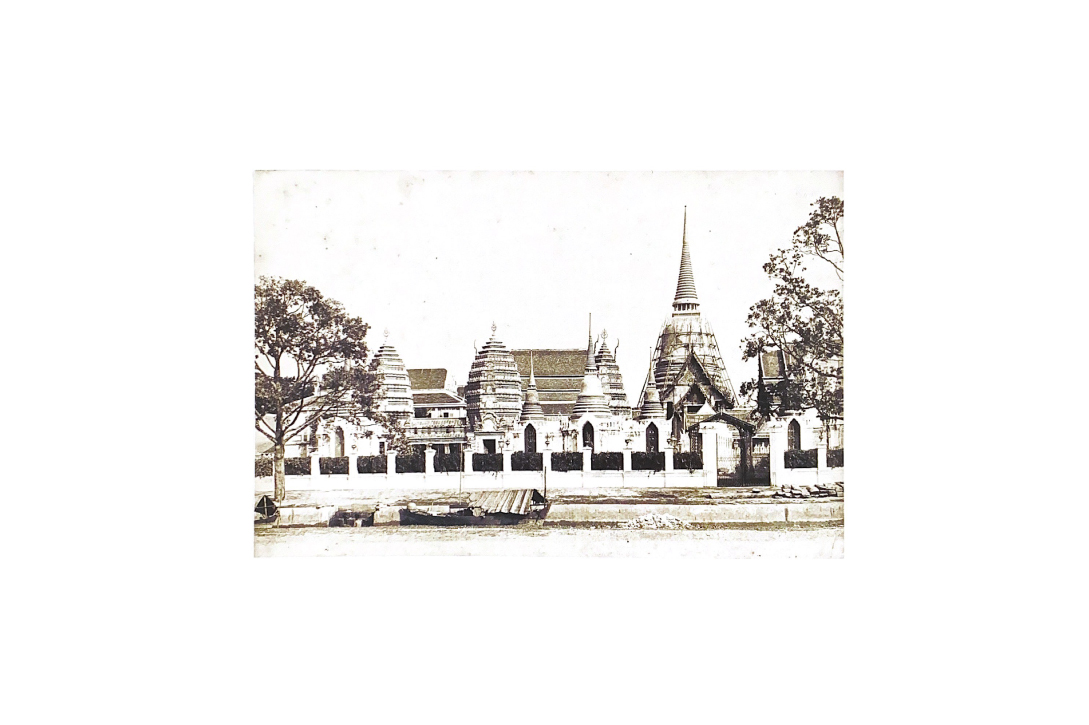
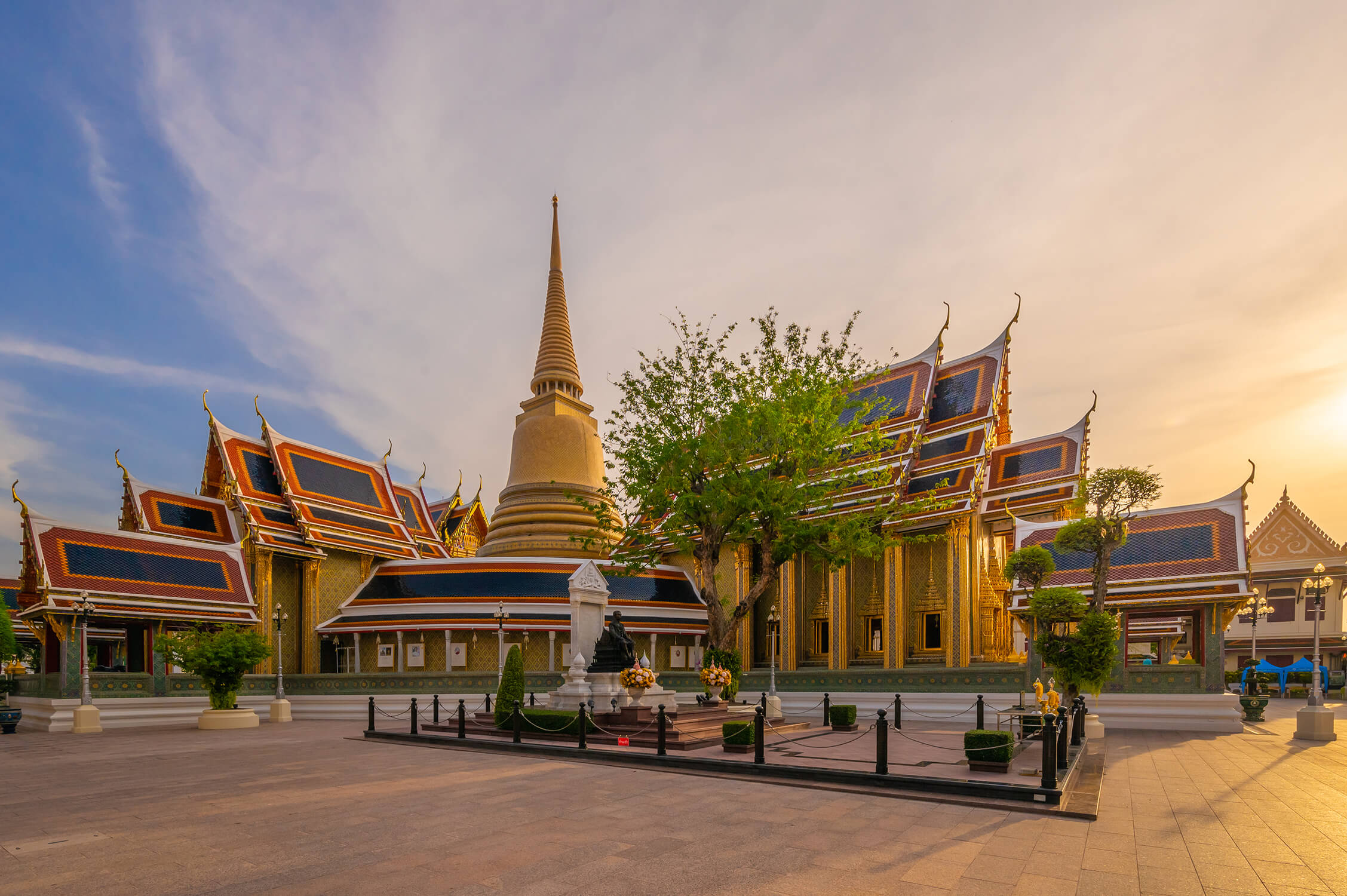
The symbolic temple of King Rama V and King Rama VII
This first-class royal Buddhist temple was specifically constructed in 1869 to be King Chulalongkorn’s symbolic temple as Thai ancient tradition dictated. It was also the last of its kind since later monarchs opted instead to renovate existing temples or build different structures entirely. From then on, the major temple of each reign would be the one where the King shares a connection or grants royal patronage.
King Prajadhipok, for instance, ordered a complete renovation of Wat Ratchabophit during his reign. Due to this, the temple is considered to be his symbolic temple. In addition, the base of Phra Phuttha Angkhirot, the principal Buddha image of this temple, also holds the remains of His Majesty King Buddha Loetla Nabhalai (King Rama II), His Majesty King Phra Nangklao (King Rama III), His Majesty King Chulalongkorn (King Rama V) and the ashes of His Majesty King Prajadhipok (King Rama VII), Her Majesty Queen Rambai Barni, and His Majesty King Bhumibol (King Rama IX).

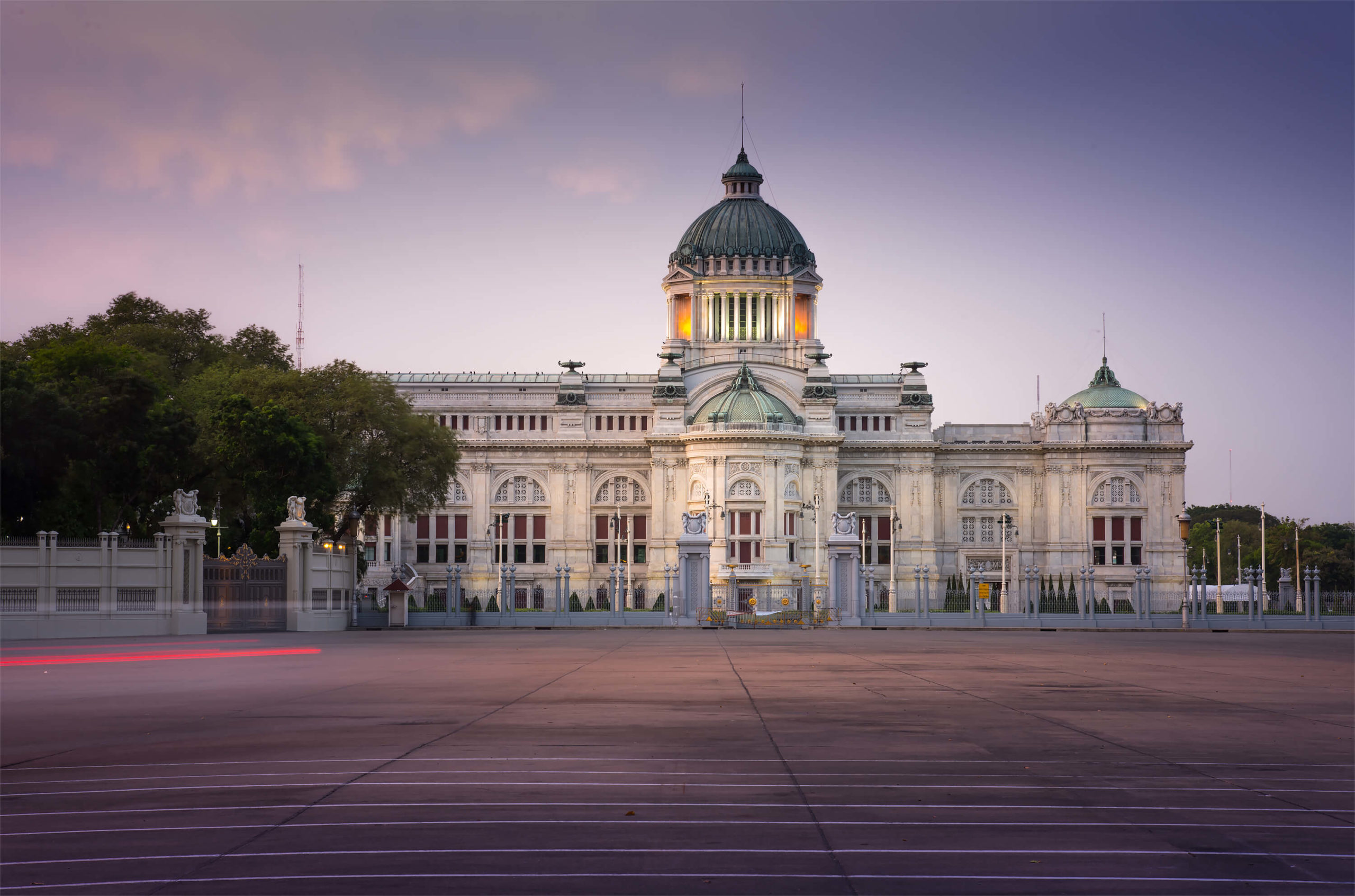
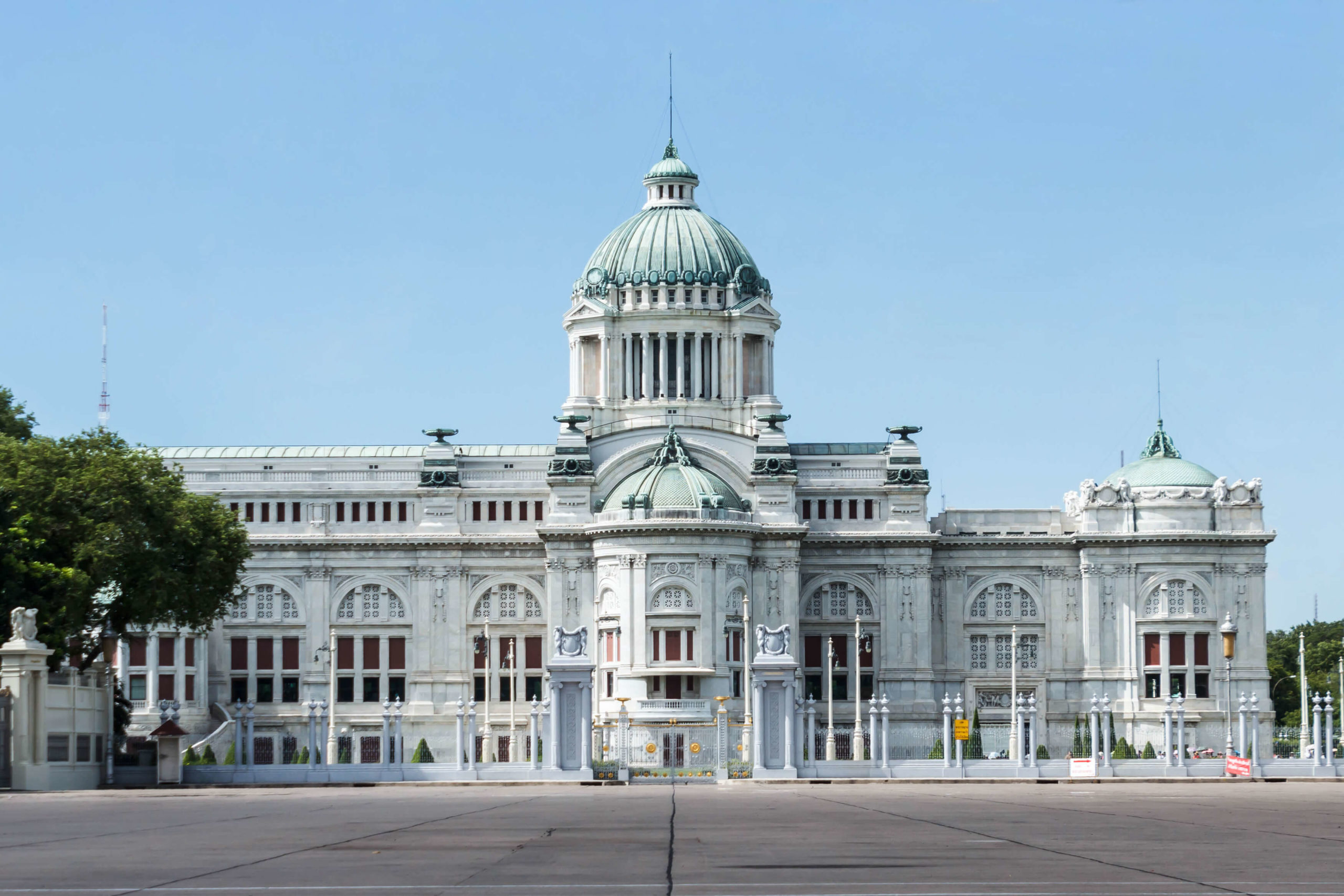
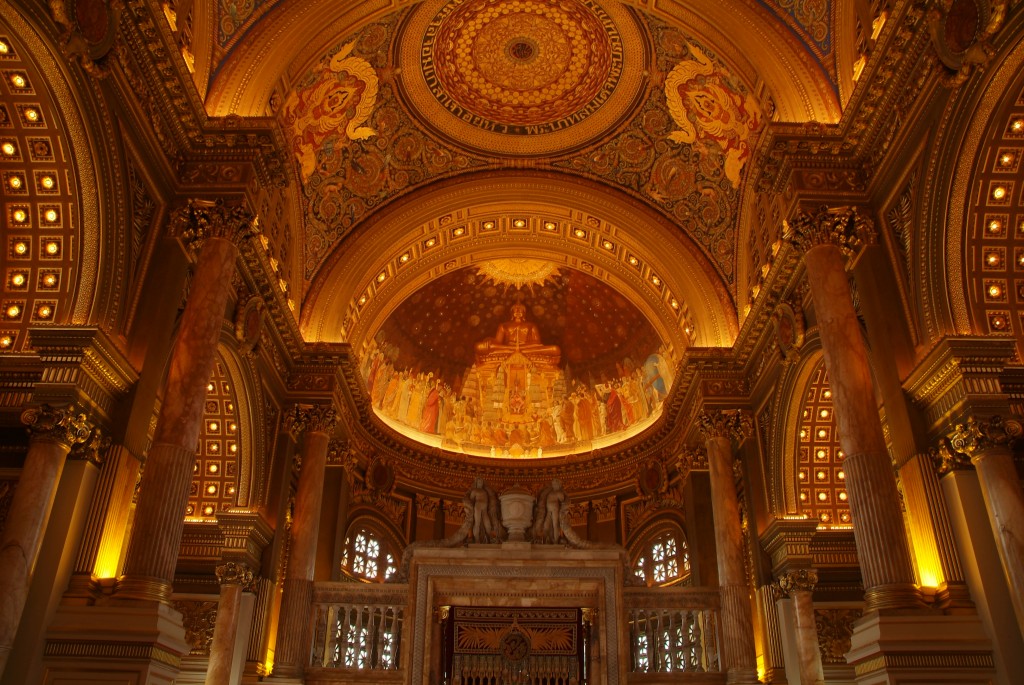
The Marble Throne in Thailand
Ananta Samakhom Throne Hall was designed and built in a neoclassical style by Mario Tamagno, a talented Italian architect. The layout of the throne hall resembles that of the Christian Church called the Latin Cross. The interior is flourished with mural frescoes illustrating Thai history albeit with western techniques. Mural paintings depict His Majesty King Chulalongkorn performing his royal duties and several Thai decorative styles. The throne hall offers many functions per His Majesty King Chulalongkorn wishes, dividing into the front reception for visitors, government officials, courtiers, male royals and the inner reception with its banquet hall and rooms for queens, consorts, ladies-in-waiting, and servants.

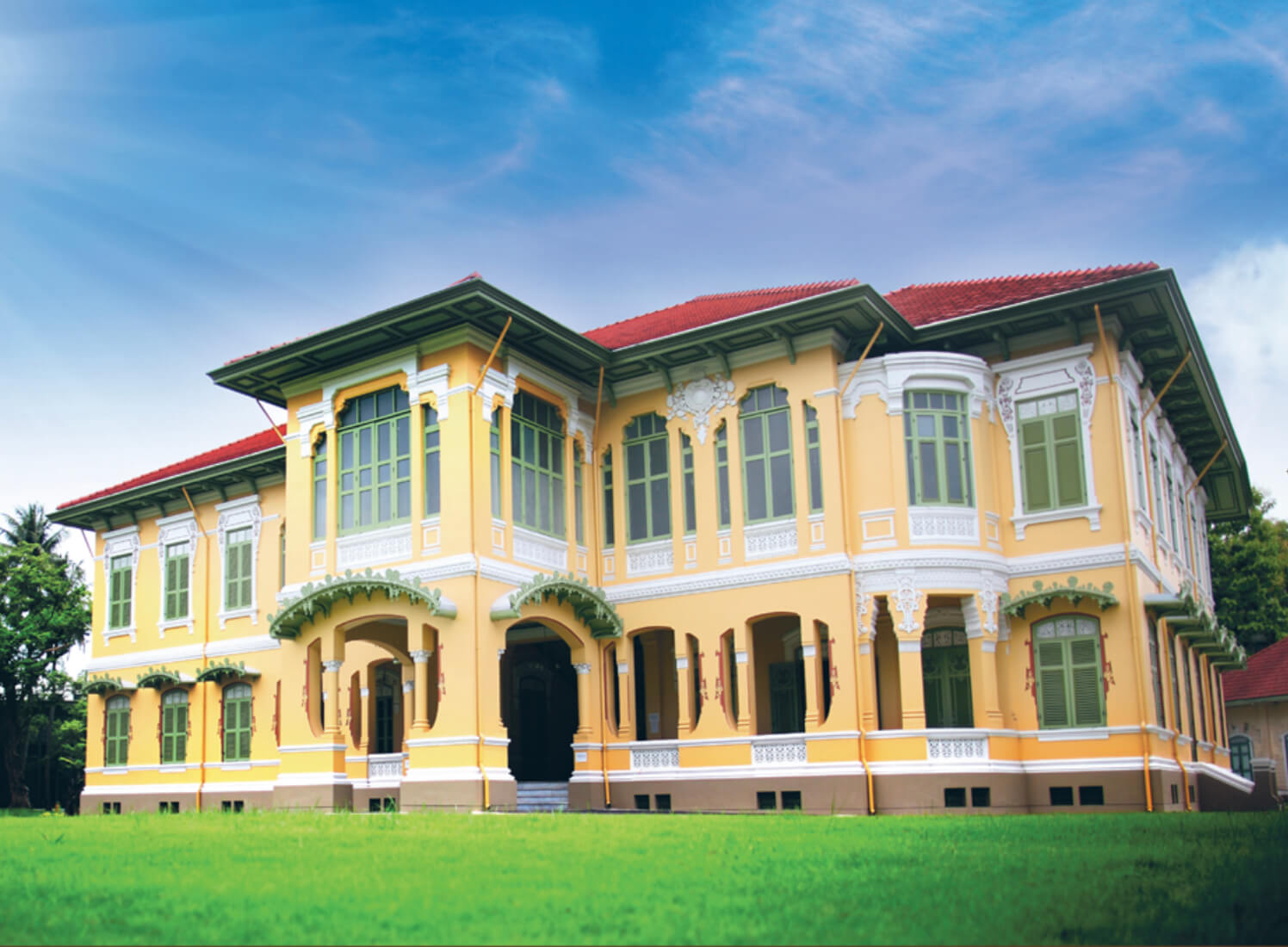
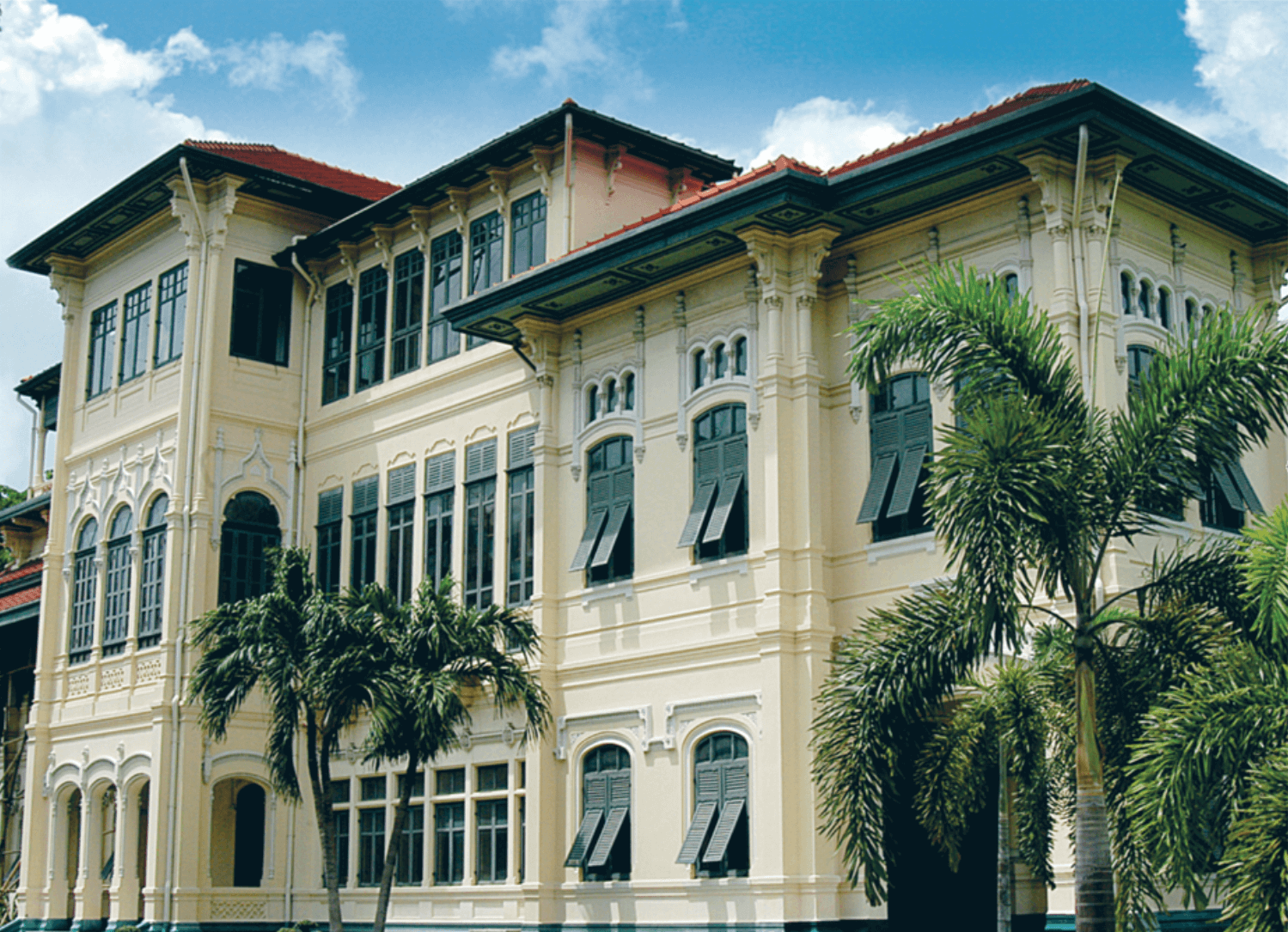
A Palace, a Government Compound, and Now the Police Museum
Like Chitralada and Dusit, the other two palaces in its proximity, Parutsakawan stems from paradise gardens in Hinduism. The Parutsakawan Palace stood on the land where His Majesty King Chulalongkorn had acquired through Privy Purse funds. It was on the southern section of the land and meant to be the King’s graduation and welcoming present to his son, His Royal Highness Prince Chakrabongse Bhuvanath, Prince of Phitsanulok from Russia. Similarly, Chitralada Royal Villa on the northern section was meant, too, as a temporary residence for the then Crown Prince Vajiravudh after his return from Britain. When he ascended to the throne, His Majesty King Vajiravudh moved to Dusit Palace.
He asked His Royal Highness Chakrabongse Bhuvanath, his younger brother, for the parcel of land where it would later be Wasukri pier. Seeing that he wished to remain at the Parutsakawan Palace, the prince agreed to the proposal in exchange for the Chitralada Royal Villa, which was right next to his palace. Subsequently, the prince dismantled the wall between the two royal residences, combining them into one.
Notably, Prince Chakrabongse Bhuvanath treated the Parutsakawan Palace as both his home and workplace. During the First World War, he utilised the Red Room as a war room. After his death, His Majesty King Vajiravudh decreed that the palace should be returned to the Privy Purse. From then onwards, it served as a site for royal ceremonies and receiving distinguished state guests.
With the Siamese Revolution in 1932, the palace changed hands and eventually became government property. It acted as a place of assembly for the People’s party, a residence of important figures, and an occasional state guest house. While in office, Field Marshal P. Phibunsongkhram decided to transfer the palace to the Police Department for their internal affairs. The department, later, granted its ownership to the National Intelligence Agency. The premise still houses the headquarter until today. Additionally, the police museum is present on the premise, displaying the history of the palace and the comprehensive development of the Thai police force.

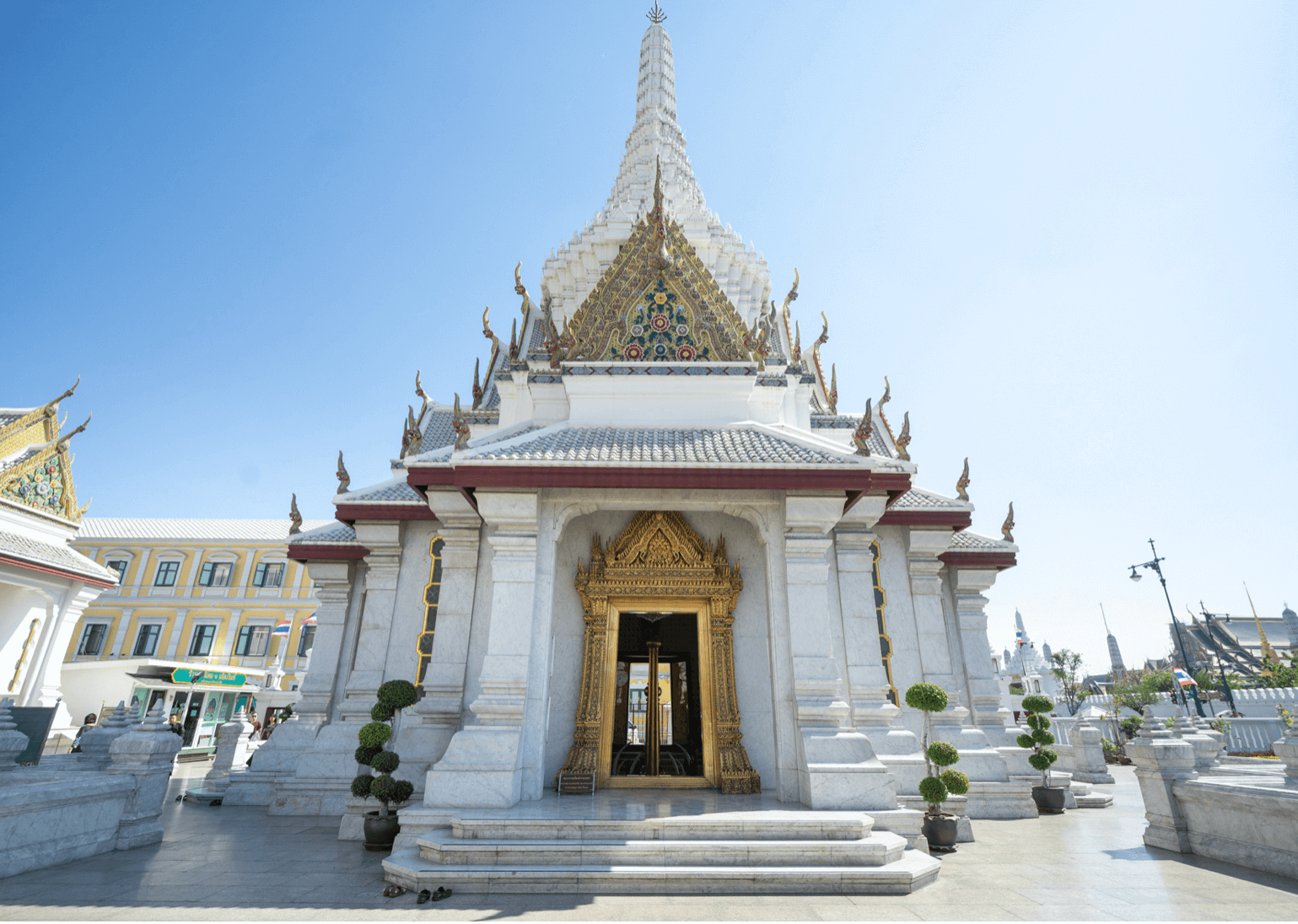
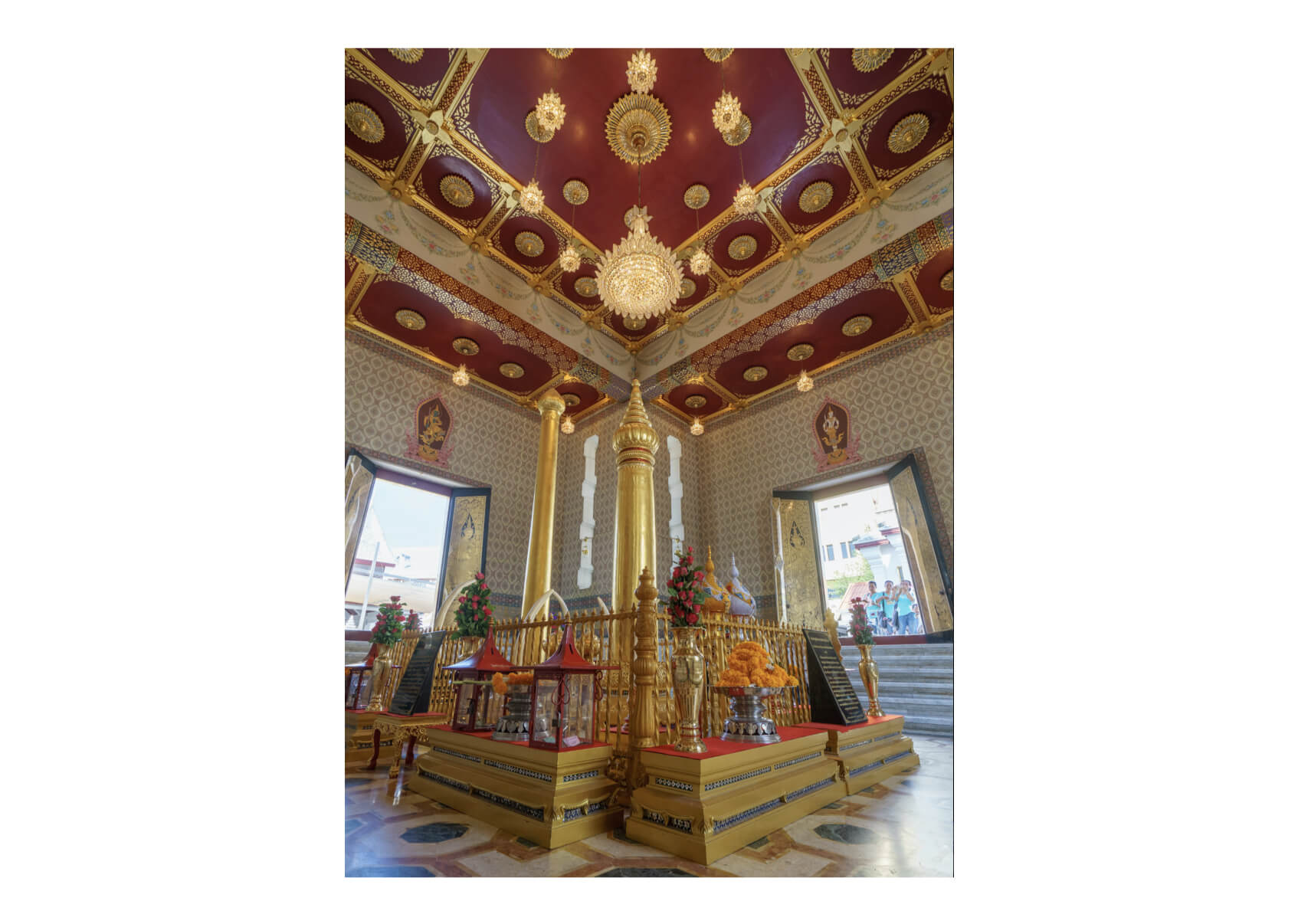
Faith, beliefs, and construction of pillar upon founding a new city
A city pillar refers to a wooden pillar built at the heart of the city. It serves as a symbol of stability and a place to house guardian deities. The idea of the city pillar may have found its root in ancient shamanism traditions and evolved into a more complicated religious practice. The actual details or process of this ritual may differ according to each belief.
His Majesty King Buddha Yodfa Chulaloke (King Rama I) called for the first city pillar establishment ceremony on 21 April 1782. Later in 1852, His Majesty King Mongkut decided to raise a new city pillar due to the dilapidated condition of the original and performed the ceremony to re-calculate the fate of the city to ensure stability and prosperity.
The Shrine does not only house the city pillar, the city protector, but also Phra Suea Mueang, Phra Song Mueang, Phra Kalachaisri, Chao Chitragupta, and Chao Hoklong. These minor deities are guardians who keep the peace, watch over, and protect the city against invaders.

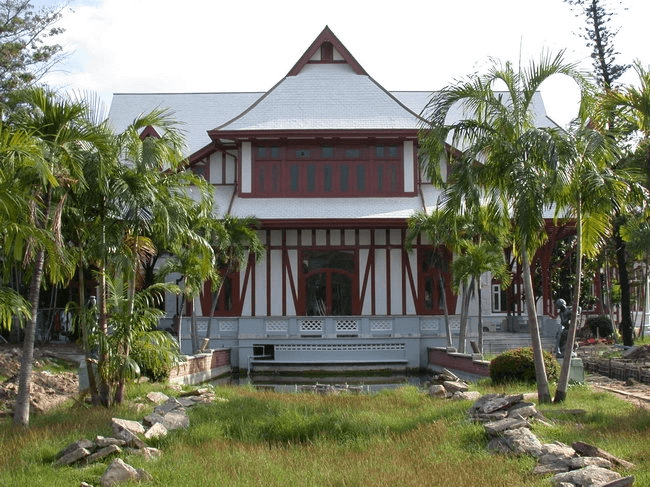
The headquarter of the first registered political party in Thailand
His Majesty King Vajiravudh commanded that Manangkhasila Mansion be built as the residence of Phraya Udomratchapakdee (Tho Sucharitakul)
In 1952, the mansion’s ownership had been transferred to the Bank of Asia. However, the government requested to use the mansion as the office of Prime Minister and the meeting place for the National Assembly of Thailand. Later, in 1955, the mansion became the headquarter of Seri Manangkhasila, the first-ever political party registered under Thai law. The leader of this short-lived party was Field Marshal P. Phibunsongkram.
The party dissolved after the coup d’etat of 1957. The Bank of Asia requested the return of the property. However, the mansion remained an occasional guest house for visiting dignitaries. Later, the Bank of Thailand decided to purchase the premise from the Bank of Asia and grant its ownership to the Ministry of Finance in exchange for the rights to the plot of land in Bang Khun Phrom district, which the Bank intended to establish the headquarter. The mansion, therefore, was handed over to the Treasury department. From 1975 onwards, it housed the National Council of Women of Thailand Under the Royal Patronage of Her Majesty the Queen. It was not until 2019 that the mansion had finally gone through a renovation project by the Fine Arts department.
Edward Healey, a British architect, designed this Tudor-style mansion, creating an imitation of a half-timber structure. The mansion is of great architectural and historical value. Recognizing this, the Fine Arts Department registered the mansion as a heritage site in 1985.

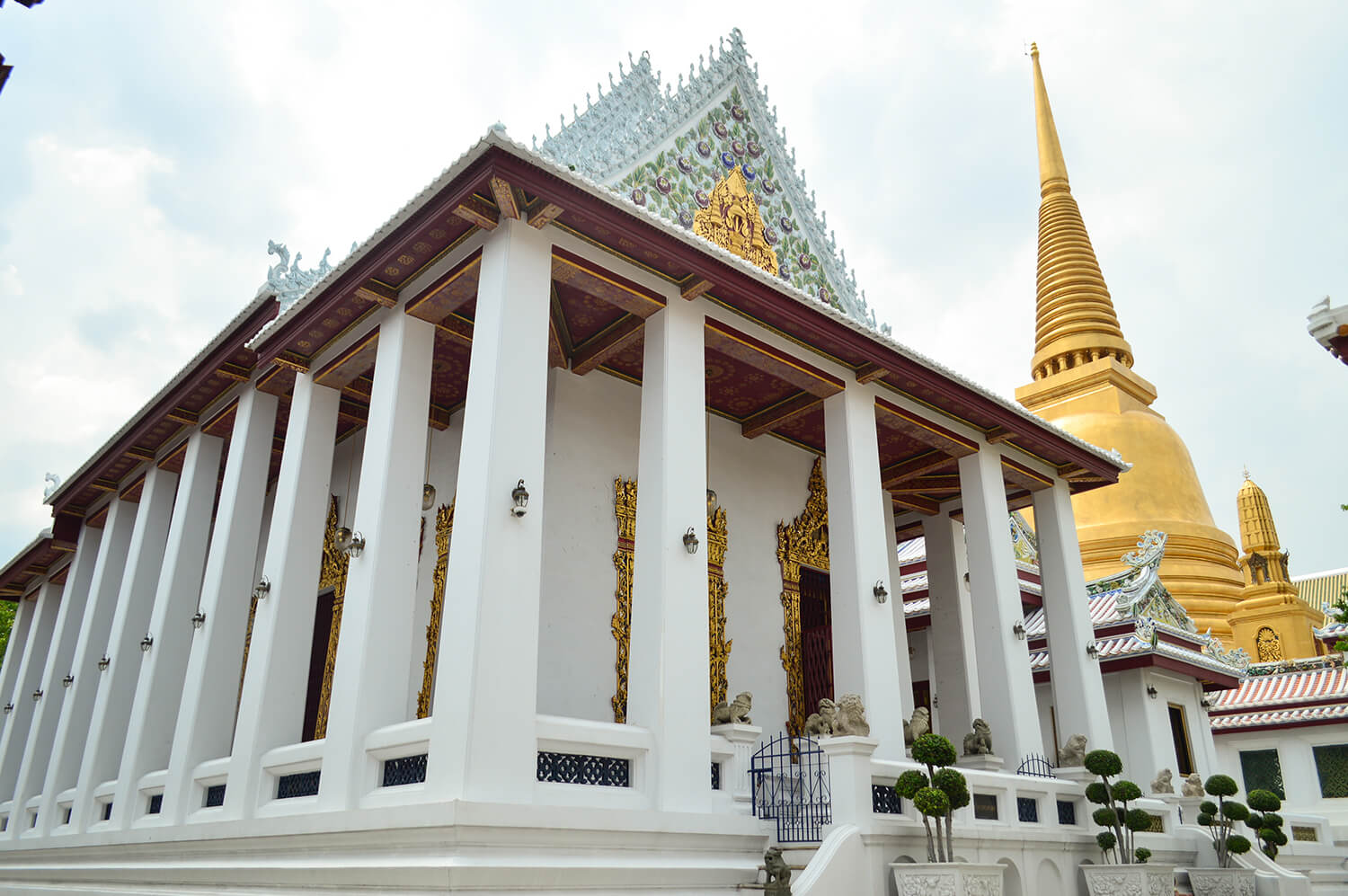
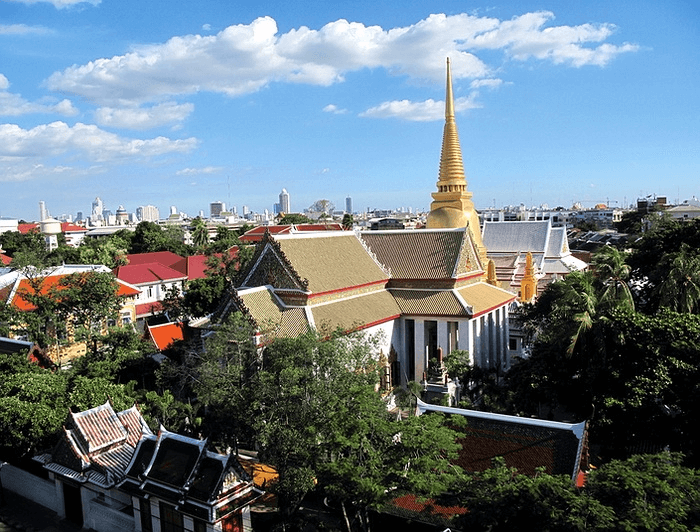
The temple where the kings resided during their monkhood
Wat Bowonniwet Vihara was built in the reign of King Phranangklao, King Rama III. His Majesty King Vajiravudh, His Majesty King Prajadhipok, and His Majesty King Bhumibol had resided in this royal Buddhist monastery during their monkhood. Inside the hall of the temple, there are mural paintings depicting allegories of Buddhist dharma and Buddhist traditions. These masterpieces are the works of Khrua In Khong, a celebrated painter during the reign of King Mongkut who expertly introduced and fused the western perspective technique with Thai conventional artistic style.

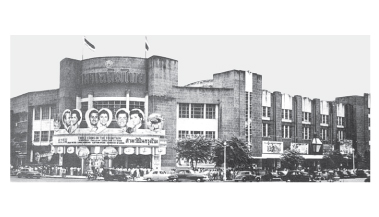
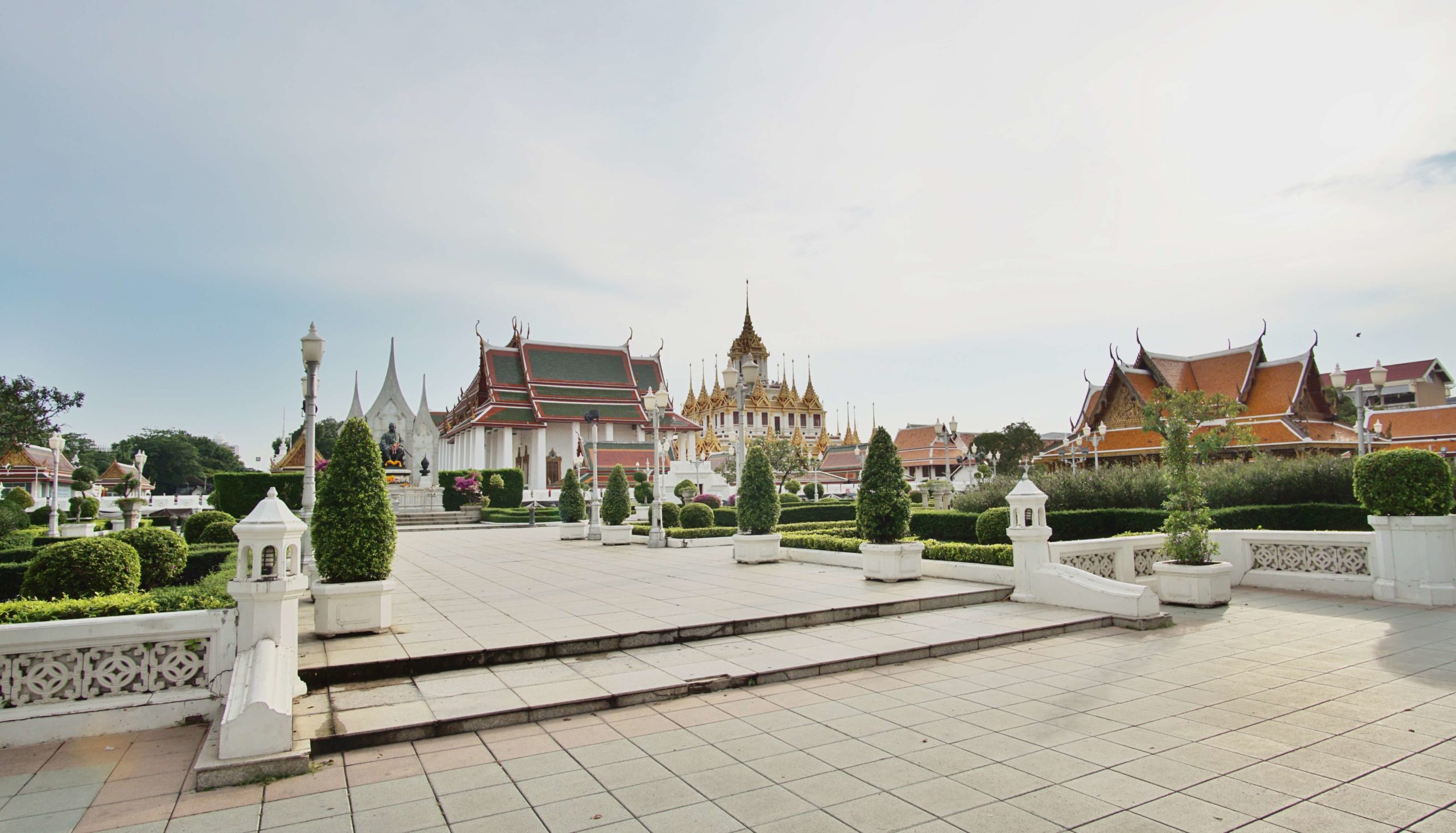
The theatre on Ratchadamnoen Road
Sala Chalermthai was yet another famed modern theatre in the capital. Designed by Jitrasen (Miu) Abhaiwongse as a part of the Ratchadamnoen Avenue development project. The edifice was built in 1940 when Field Marshal P. Phibunsongkhram was in power. It encapsulated the People’s Party arts, a specific type of architectural style found during the early era of the People’s Party. Originally, Sala Chalermthai was a drama theatre but was later changed into a movie theatre due to the shift in trend. The building was, unfortunately, dismantled in 1989. Royal Pavilion Mahajetsadabadin now stands in its place, offering a clear view of the Loha Prasat (Iron Castle) in the background.

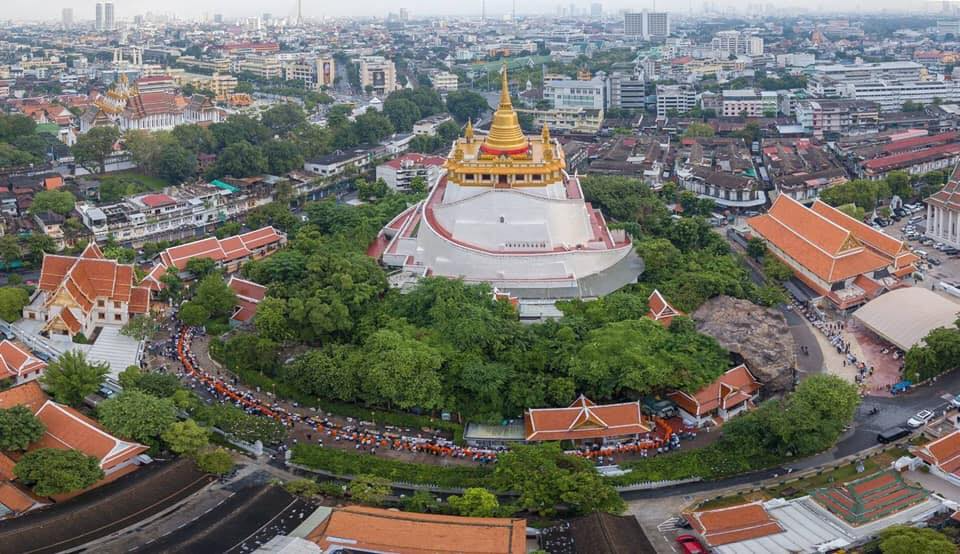
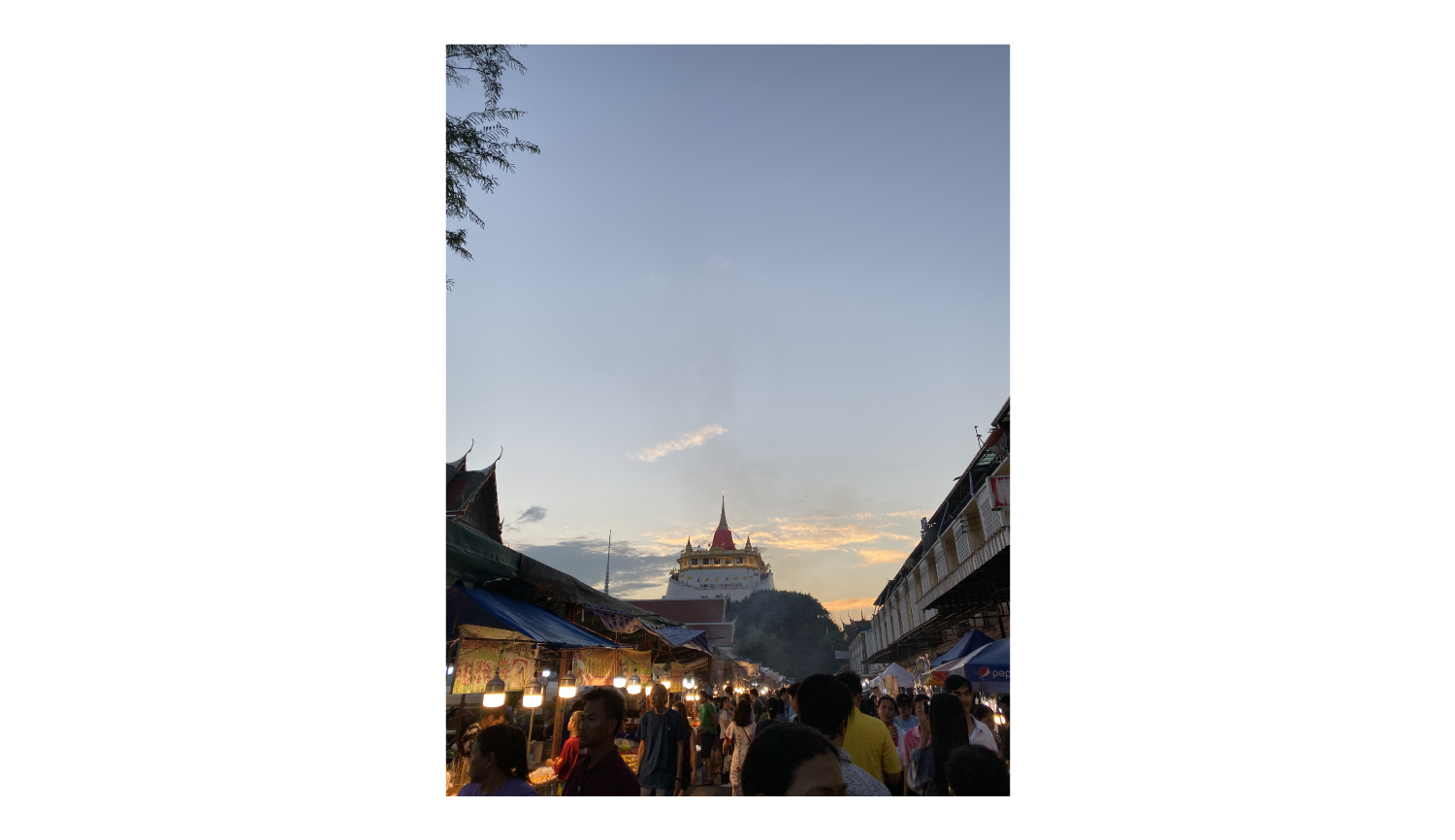
Climbing the 344 steps of the Golden Mount in the city of Bangkok
Wat Saket Ratcha Wora Maha Wihan is also known as Wat Phu Khao Tong (Temple of Golden Mount) because of its steep artificial hill or the Phu Khao Thong stupa. His Majesty King Phra Nangklao wished to imitate the stupa located at Wat Phu Khao Tong in the old Ayutthaya Kingdom and ordered for its construction. The task was helmed by Somdet Chaophraya Borommahaphichaiyat (Tad Bunnag), the project, however, was incomplete due to some complications. Per His Majesty King Mongkut’s command, Phraya Sriphiphat (Phae Bunnag), a son of Somdet Chaophraya Borommahaphichaiyat, took over the project. After the completion, His Majesty King Monhkut named it “Golden Mount” and called for a celebration.
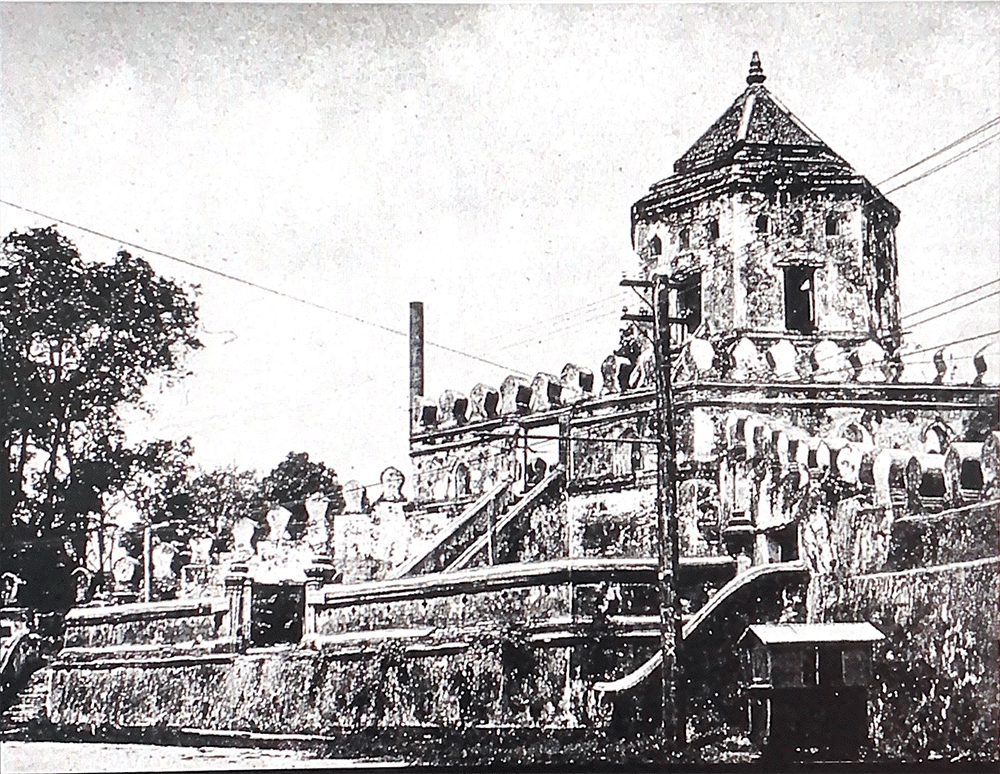
ถนนพระสุเมรุ เป็นถนนที่อยู่ในย่านสำคัญ ด้วยมีชุมชนหลายแห่ง สถานที่สำคัญทางศาสนา และเป็นย่านการค้าแสนคึกครื้นมาตั้งแต่อดีต จุดเริ่มต้นของถนนอยู่ที่ป้อมพระสุเมรุ ติดกับถนนพระอาทิตย์ พาดยาวเลียบคลองบางลำพูไปจนถึงถนนราชดำเนินกลางบริเวณแยกผ่านฟ้าลีลาศ และยังตัดผ่านไปยังถนนหลายสาย เช่น ถนนพระอาทิตย์ ถนนจักรพงษ์ ถนนตะนาว ถนนสามเสน ถนนประชาธิปไตย และถนนดินสอ
ชื่อถนนนั้นเป็นไปตามชื่อตามป้อมพระสุเมรุที่อยู่ต้นสาย ป้อมพระสุเมรุ เป็นหนึ่งในสิบสี่ป้อมที่สร้างขึ้นตั้งแต่รัชสมัยพระบาทสมเด็จพระพุทธยอดฟ้าจุฬาโลกมหาราช รัชกาลที่ 1 และยังเป็นป้อมที่มีอยู่ในปัจจุบัน เช่นเดียวกับป้อมมหากาฬ

Phra Sumen Fort in the Past
Phra Sumen Road runs through a long-established commercial district comprising many communities, religious sites, and rows of shophouses. The road itself starts at Phra Sumen Fort where Phra Atit Road ends. Its route leads alongside Bang Lamphu canal and finishes at Phan Fa Lilat intersection of Ratchadamnoen Klang Road. It connects with several other roads such as Phra Atit Road, Chakrabongse Road, Tanao Road, Samsen Road, Prachathipatai Road, and Dinso Road.
The road is named after Phra Sumen Fort, its starting point. One of the fourteen forts built in the reign of King Buddha Yodfa Chulaloke (King Rama I), this fort and Mahakan fort are now the only two forts left standing as historical sites in Phra Nakhon.
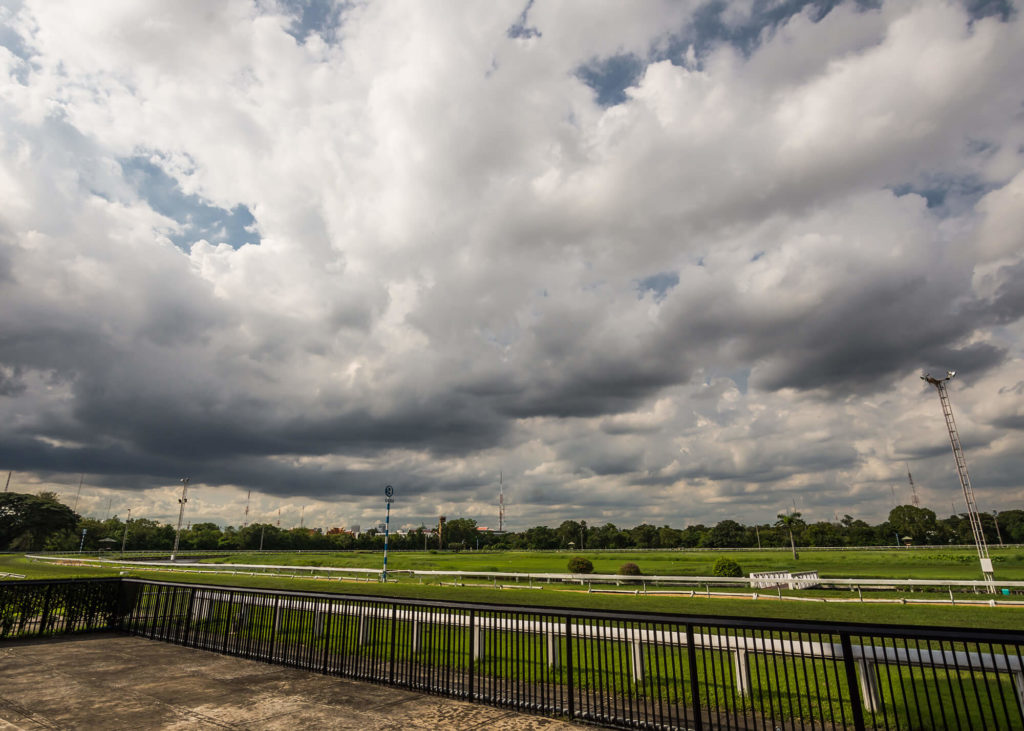
สนามม้าสำหรับคนไทย ที่เหลือไว้เพียงชื่อ
ราชตฤณมัยสมาคม หรือ เรียกกันโดยทั่วไปว่า สนามม้านางเลิ้ง เป็นสนามแข่งม้าและสปอร์ตคลับตั้งอยู่บนถนนพิษณุโลก บริเวณย่านนางเลิ้ง เมื่อ พ.ศ. 2456 พระยาประดิพัทธภูบาลและพระยาอรรถการประสิทธิ์ ขอพระราชทานพระบรมราชานุญาตและที่ดินบริเวณตำบลนางเลิ้งจากพระบาทสมเด็จพระมงกุฎเกล้าเจ้าอยู่หัว เพื่อสร้างสนามม้าสำหรับคนไทย และพระองค์เสด็จฯ เปิดสนามม้า เมื่อวันที่ 18 ธันวาคม พ.ศ. 2459 พระราชทานนามว่า ราชตฤณมัยสมาคม
ภายในราชตฤณมัยสมาคมฯ มีสนามแข่งม้าและมีพื้นที่สำหรับการบำรุงพันธุ์ม้าโดยเฉพาะ เนื่องจากม้าส่วนใหญ่นำเข้ามาจากต่างประเทศ ต้องได้รับการดูแลเป็นพิเศษ ต่อมามีการเพิ่มและต่อเติมพื้นที่สำหรับกีฬาชนิดอื่น ๆ เช่น บิลเลียด กอล์ฟ เทนนิส และฟุตบอล เป็นต้น กลายเป็นที่พบปะสังสรรค์และสปอร์ตคลับของเหล่าเจ้านายในสมัยนั้น การแข่งม้าถือเป็นทั้งความบันเทิงและการพนันอย่างหนึ่งที่เป็นที่นิยมอยู่ช่วงเวลาหนึ่ง แต่ในยุคสมัยต่อมาความนิยมก็ลดลงไป
ปัจจุบัน ราชตฤณมัยสมาคมฯ ที่มีอายุกว่า 102 ปี ปิดตัวลง เนื่องจากหมดสัญญาการเช่าพื้นที่ โดยการแข่งม้าครั้งสุดท้ายเกิดขึ้นเมื่อวันที่ 16 กันยายน พ.ศ.2561
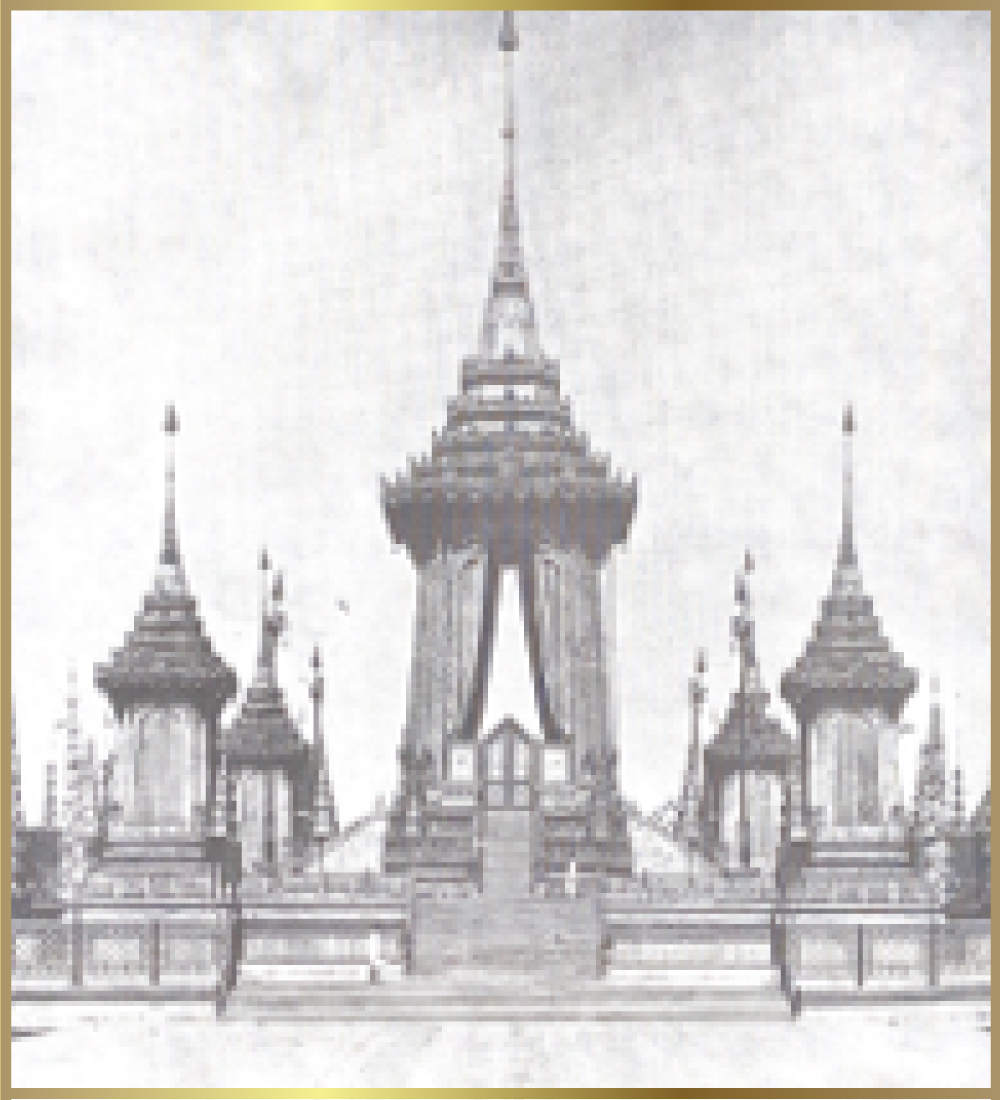
The Royal Cremation of H.M. King Chulalongkorn (King Rama V)
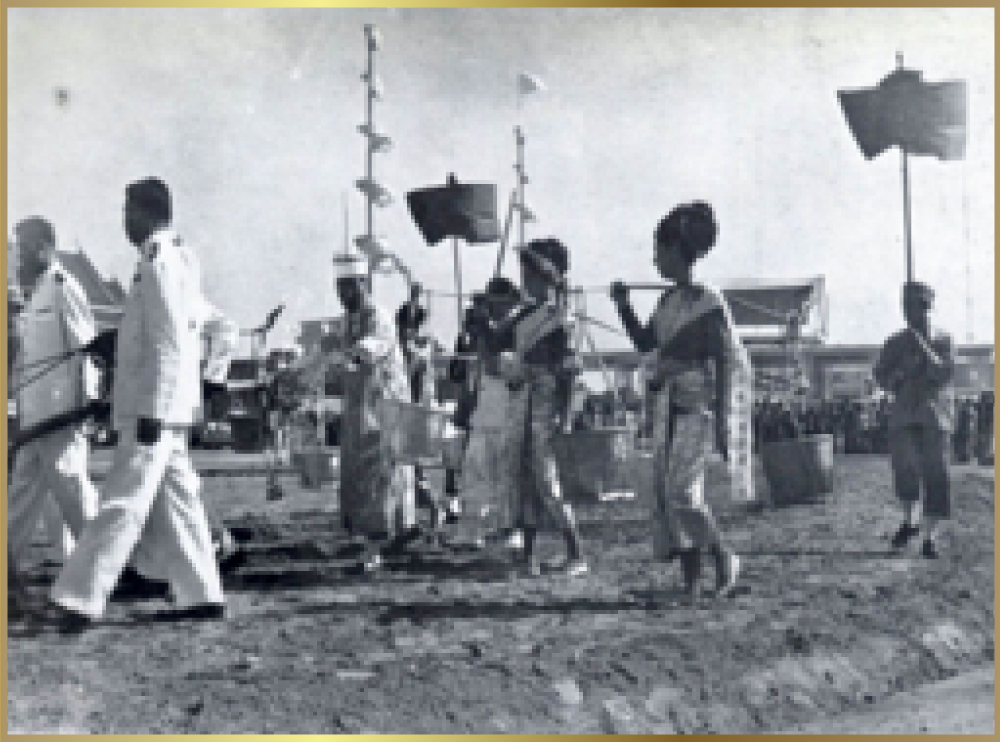
The Royal Ploughing Ceremony on 13th May 1966
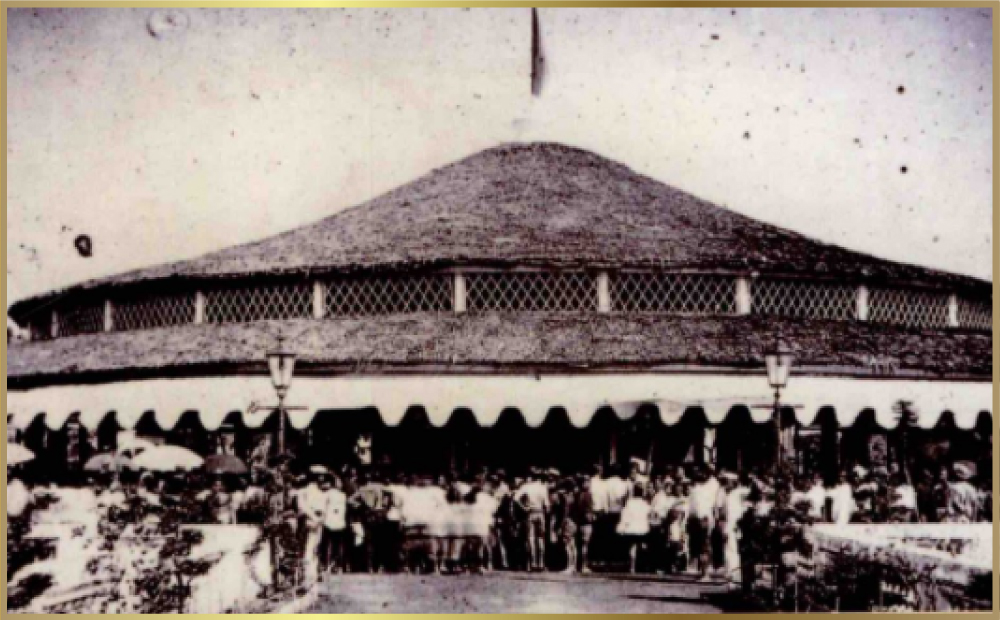
National Exhibition on the Occasion of the 100th Anniversary of Phra Nakorn in 1882 in the Reign of H.M. King Chulalongkorn
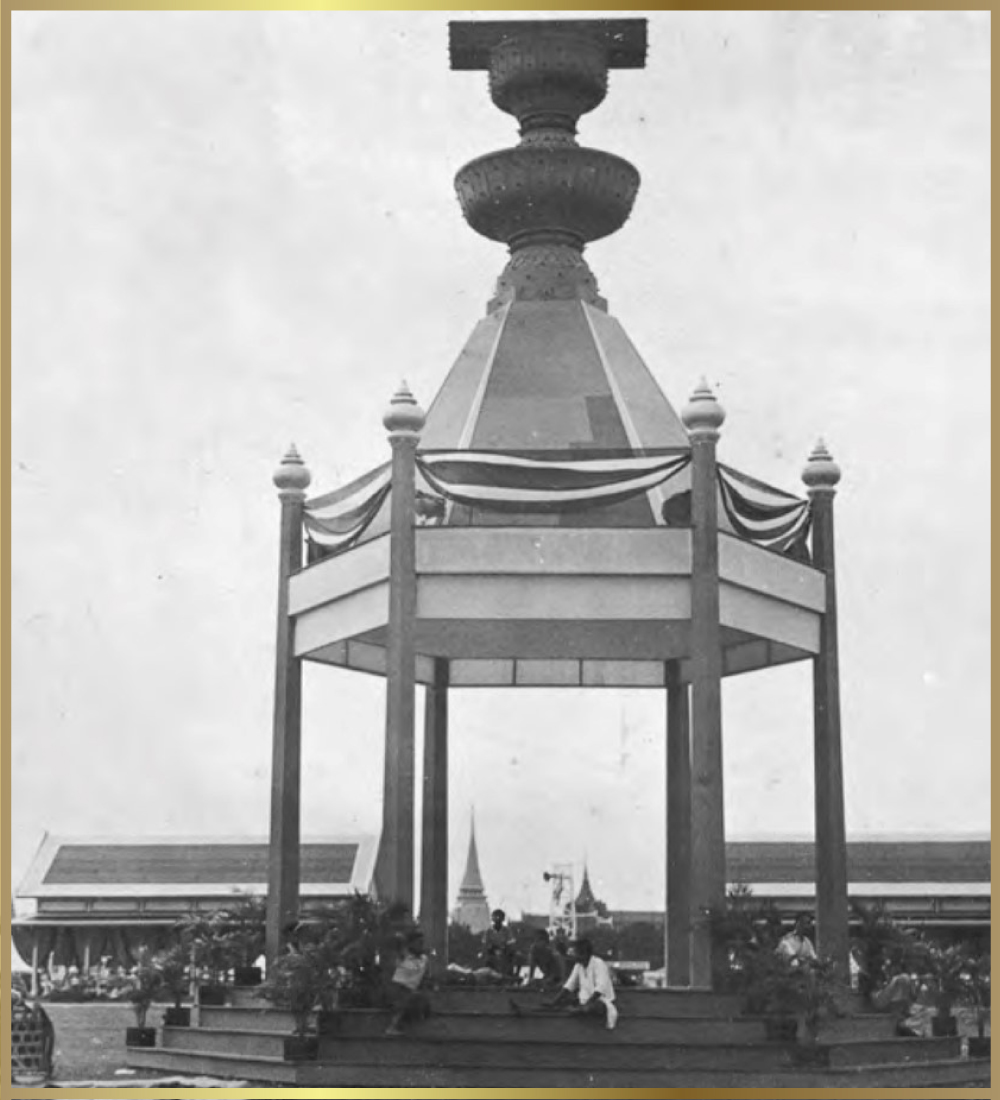
The Celebration of the Constitution Day in 1938

Constructed in the reign of King Buddha Yodfa Chulaloke (Rama I), this vast open field earned its original name, Thung Phra Men, from its purpose as a royal cremation ground for past kings and close relatives. Throughout the reign of King Rama I to King Rama III, the function of Sanam Luang was linked to the wish of the King and royal ceremonies. For example, it was the venue for the Royal Ploughing Ceremony, the Harvest Festival, the Rain-Beckoning Rituals, and the location of Royal paddy fields during rice-planting seasons.
In the reign of King Chulalongkorn (Rama V), Sanam Luang was expanded to accommodate new functions. The western influence had been steadily increasing ever since the reign of King Mongkut (Rama IV). It gave rise to various activities taking place on the ground, encouraging more participation by the people. Examples of such activities were the centennial celebration of Bangkok with its grand royal procession and the National Exhibition that displayed Siamese-made products and was open to the general public for three months. At the time, there was an establishment of several almshouses around the premise as well. Later, in the reign of King Vajiravudh (Rama VI), Sanam Luang was used for military parade inspection. It was also a training ground for the King’s paramilitary militia, Wild Tiger Corps and Tiger Cups, its youth counterpart. In the Reign of King Prajadhipok (Rama VII), royal ceremonies were still held on the ground, albeit on a smaller scale, due to the then economic crisis. The Siamese Revolution of 1932 was a turning point where the function of Sanam Luang had shifted to fully accept the people, while simultaneously maintaining its status as a ceremonial site for both the state and the crown. It depicts how the space is shared across the board, although subsequent changes may omit the people from the picture somewhat.

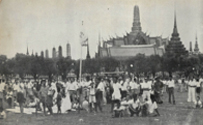
(1) Kite Surfing, One of the most famous activities on Sanam Luang
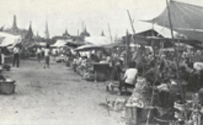
(2) The Flea Market on Sanam Luang, Plant Market Zone
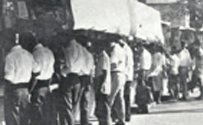
(3) The Flea Market on Sanam Luang, Book Zone
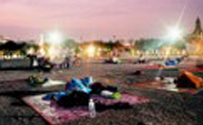
(4) Sanam Luang as a home for Ones
Despite not being built to be a park, Sanam Luang has served several functions due to its vast open space, proximity to significant places, and prominent tourist attractions within Phra Nakhon. The Siamese Revolution of 1932 has made Sanam Luang cater more to the public. When Field Marshal P. Phibunsongkhram held the office, Sanam Luang acted as a public space. It was the venue for “Sanam Luang Flea Market”, a response to the policy to have a flea market in every province to stimulate the local economy. It provided, too, a platform for expressing and debating political ideas or “Hyde Park” (the Speakers Corner). Unfortunately, the Flea Market initiative was abolished in the era of General Kriangsak Chamanan. Under him, Sanam Luang turned into a recreation park, a place filled with activities; picnicking, playing sports, and any activities not in direct conflict with the government’s perspective. Sometimes, the state’s attempt to renovate the field does put an end to activities enjoyed by the people. However, such attempts do not negate the public space aspect of Sanam Luang. On the other hand, it introduces people to Sanam Luang and its legacy.

พระเมรุมาศ พระบาทสมเด็จพระจุลจอมเกล้าเจ้าอยู่หัว รัชกาลที่ 5

พระราชพิธีพืชมงคลจรดพระนังคัลแรกนาขวัญ เนื่องในโอกาสวันพืชมงคล วันที่ 13 พฤษภาคม พ.ศ.2509

งาน นาเชอนนัล เอกซฮิบิชัน (National Exhibition) ในคราวฉลองพระนครครบรอบ 100 ปี พ.ศ. 2425 รัชสมัยพระบาทสมเด็จพระจุลจอมเกล้าเจ้าอยู่หัว

งานฉลองรัฐธรรมนูญ ณ สนามหลวง พ.ศ.2481
สนามหลวง หรือเรียกกันตามชื่อเดิมว่า ทุ่งพระเมรุ เนื่องจากใช้เป็นพื้นที่สำหรับพระเมรุมาศถวายพระเพลิงพระบรมศพพระมหากษัตริย์และพระราชวงศ์ชั้นสูง สร้างขึ้นในรัชสมัยพระบาทสมเด็จพระพุทธยอดฟ้าจุฬาโลกมหาราช ในช่วงรัชกาลที่ 1 ถึง รัชกาลที่ 3 การใช้พื้นที่ท้องสนามหลวงเป็นไปตามพระราชประสงค์ของพระมหากษัตริย์ในการประกอบพระราชพิธีต่าง ๆ เท่านั้น เช่น พิธีแรกนาขวัญ พระราชพิธีพืชมงคล พระราชพิธีพิรุณศาสตร์ (พิธีขอฝน) และการทำนาหลวง เป็นต้น
ในรัชสมัยพระบาทสมเด็จพระจุลจอมเกล้าเจ้าอยู่หัว สนามหลวงได้รับการปรับปรุงให้มีพื้นที่กว้างขึ้น เพื่อรองรับการเปลี่ยนแปลงในแง่ของการใช้งานที่จะเกิดขึ้นจากอิทธิพลของตะวันตกที่เริ่มเข้ามาตั้งแต่สมัยรัชกาลที่ 4 ทำให้กิจกรรมที่เกิดขึ้นบนท้องสนามหลวงมีความหลากหลาย ค่อย ๆ เปิดรับให้ประชาชนเข้ามามีส่วนร่วมมากยิ่งขึ้น ประกอบไปด้วย งานฉลองพระนครครบรอบ 100 ปี ที่มีกระบวนพยุหยาตราอันยิ่งใหญ่ การจัด “นาเชอนนัล เอกซฮิบิเชน (National Exhibition)” เป็นการแสดงสินค้าที่ผลิตในประเทศสยามให้ประชาชนเข้าชมเป็นเวลา 3 เดือน และการตั้งโรงทานรอบสนามหลวง ต่อมาในรัชสมัยพระบาทสมเด็จพระมงกุฎเกล้าเจ้าอยู่หัว มีการใช้สนามหลวงเป็นที่สวนสนามและการซ้อมรบของเหล่าเสือป่าและลูกเสือ สืบเนื่องมาจนถึงรัชสมัยพระบาทสมเด็จพระปกเกล้าเจ้าอยู่หัว ที่ยังคงมีการจัดงานพระราชพิธีบนท้องสนามหลวงเรื่อยมา แม้ว่าบางงานจะมิได้ใหญ่โตเอิกเกริก เนื่องจากภาวะเศรษฐกิจตกต่ำในประเทศขณะนั้นก็ตาม ภายหลังการเปลี่ยนแปลงการปกครอง พ.ศ.2475 จึงเป็นจุดเปลี่ยนของสนามหลวงที่เปิดรับประชาชนอย่างเต็มกำลังในขณะเดียวกัน ยังคงเป็นพื้นที่ของพระราชพิธีและรัฐพิธีอยู่แสดงให้เห็นถึงการใช้พื้นที่ร่วมกัน แม้การ
เปลี่ยนแปลงของสนามหลวงในปัจจุบัน จะทำให้ภาพของประชาชนเลือนรางไปก็ตาม

(1) การเล่นว่าว การแข่งขันและกิจกรรมยามว่างสำหรับประชาชน

(2) ตลาดนัดสนามหลวง ส่วนที่จำหน่ายต้นไม้และพืชพันธุ์ต่าง ๆ

(3) ตลาดนัดสนามหลวง มุมหนังสือสำหรับนักอ่าน

(4) สนามหลวงในฐานะที่พักพิงของใครหลาย ๆ คน
ถึงแม้ว่าสนามหลวงจะไม่ได้เกิดขึ้นมาเพื่อเป็นสวนสาธารณะ แต่ลักษณะของสนามหลวงสามารถตอบโจทย์กิจกรรมได้หลายรูปแบบ เนื่องจากมีพื้นที่กว้างใหญ่ อยู่ใกล้สถานที่สำคัญและแหล่งท่องเที่ยวในพระนครภายหลังการเปลี่ยนแปลงการปกครอง พ.ศ.2475 บทบาทของสนามหลวงเปลี่ยนไปอย่างเห็นได้ชัด มีการจัดกิจกรรมที่เกี่ยวข้องกับประชาชนมากขึ้นจากเดิม อาทิ ในสมัยที่จอมพล ป. พิบูลสงคราม เป็นนายกรัฐมนตรี สนามหลวงรับบทเป็นพื้นที่สาธารณะ ด้วยการใช้เป็น “ตลาดนัดสนามหลวง” ซึ่งเป็นผลมาจากนโยบายให้มีตลาดนัดทุกจังหวัดเพื่อกระตุ้นเศรษฐกิจ และเป็นพื้นที่ที่ได้รับอนุญาตให้จัดเวทีปราศรัยแสดงความคิดเห็นทางการเมือง เรียกว่า “ไฮปาร์ก” หลังจากนั้นถึงแม้ว่าตลาดนัดจะถูกยกเลิกไปในสมัยของพล.อ. เกรียงศักดิ์ ชมะนันท์ สนามหลวงกลายมาเป็นสถานที่พักผ่อนหย่อนใจของประชาชน มีกิจกรรมเกิดขึ้นมากมาย เช่น การเป็นสวนสาธารณะ การเล่นกีฬา และสิ่งที่ไม่ขัดกับมุมมองของรัฐ มีหลายครั้งที่รัฐพยายามจัดโครงการปรับปรุงพื้นที่ เป็นเหตุให้กิจกรรมเหล่านั้นของประชาชนถูกยกเลิกไป แต่นั่นไม่ได้ทำให้ความเป็นพื้นที่สาธารณะของสนามหลวงหายไป ในทางกลับกัน นี่ทำให้ประชาชนหลายคนรู้จักและรับรู้ถึงเหตุการณ์ต่าง ๆ ที่เกิดขึ้น ณ ที่แห่งนี้